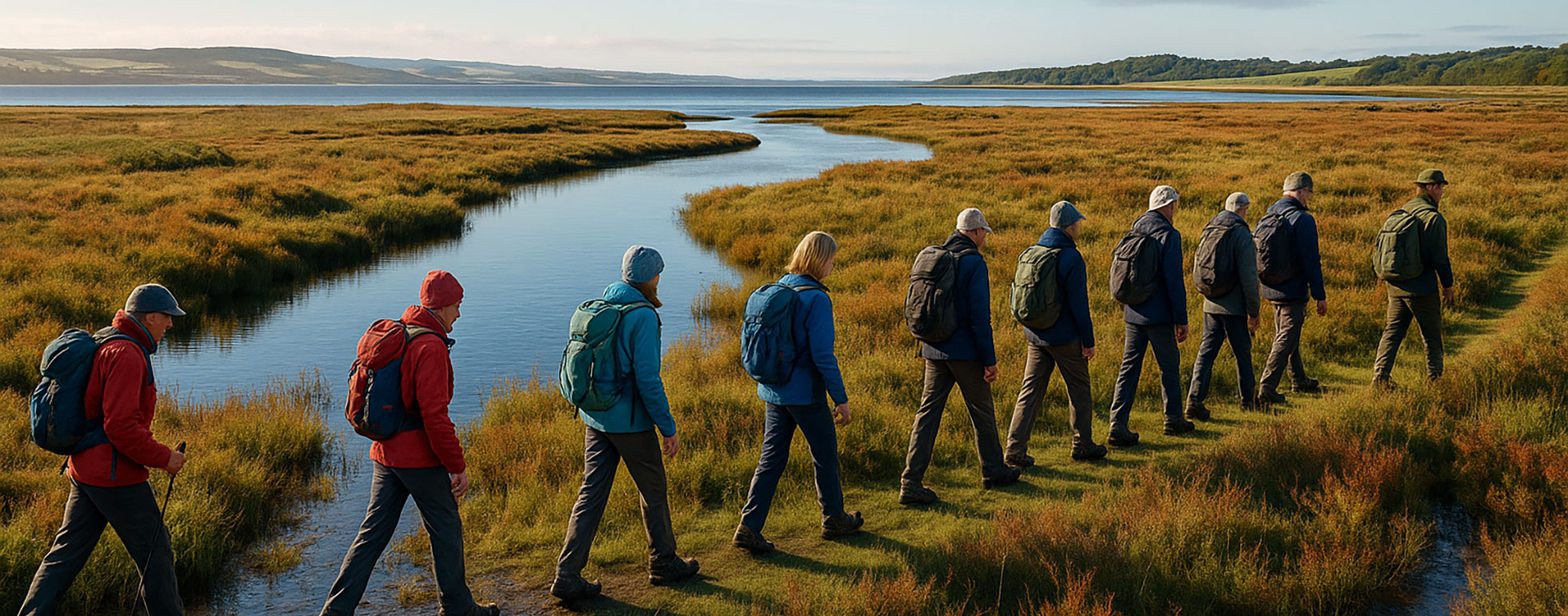From Marsh to Mechanised
Once upon a sodden time, Merkinch was mostly mud and marsh: a place where the tide dictated life’s tempo. The locals fished, foraged, and got on with it, rain or shine (and let’s face it, mostly rain). Then came the Victorians with their industry, and everything changed faster than you could say “progress.”
The wetlands were hemmed in by railways and yards, the air got heavier, and so did the work. Yet somehow, life clung on - reeds poking through the cracks, gulls circling above the smoke. If resilience were a postcode, it would have an Inverness one.
The Shifting Ground Beneath Our Feet
Merkinch isn’t static; never has been. The land literally moves here, shaped by tides and time. The Beauly Firth breathes in and out twice a day, redrawing the map in miniature. You can walk a path one week and find it underwater the next. Locals just shrug; that’s coastal life for you.
And yet, despite all the engineering, the fences, the tidy trails, nature still writes the rules. The mud remembers. It’s soaked up centuries of footsteps, cartwheels, and diesel spills. It’s a diary written in silt.
Flora and Fauna, Nature’s Quiet Rebellion
Give nature half a chance and it’ll move back in quicker than a nosy neighbour. Today, Merkinch hums with life: sea aster blooming on the banks, herons stalking the shallows, foxes making mischief after dark. The reeds whisper secrets to the wind, as if gossiping about the humans who nearly wrecked it all.
It’s the classic Scottish comeback story, stubborn, beautiful, a bit wild round the edges. You can almost hear the soundtrack: something with fiddles and attitude.
People of the Place
Merkinch folk have always been tough as boot leather. They’ve weathered economic tides that would flatten softer souls. There’s pride here - not the glossy brochure kind, but the kind that comes from knowing your roots, literally. The land provided, then punished, then provided again.
I once met a retired shipyard worker by the canal. He pointed to the mudflats and said, “That’s my retirement plan: peace and a flask of tea.” It was said half-jokingly, but with that dry Highland wit that hides a lifetime of graft. He didn’t mention the midges. Wise man.
Motors, Mud, and Modern Life
These days, the car is king: even in the wilder corners of Inverness. People come here for birdwatching or just to breathe, and the car park tells a story of its own: hatchbacks with walking sticks in the boot, campervans smelling faintly of bacon rolls, and the occasional mud-splattered SUV that clearly took the scenic route.
If you’re heading out here yourself, it’s worth checking your car breakdown insurance before tackling those narrow lanes. One wrong turn and you’re introducing your bumper to a saltmarsh, and trust me, recovery trucks don’t come cheap north of the bridge.
Still, there’s a romance to it, driving through drizzle, wipers squeaking in rhythm, gulls wheeling above like tiny judges. The journey’s half the charm, as long as you come prepared.
Why Change Matters
The landscape’s evolution hasn’t just changed the view, it’s changed the community. What was once industry is now recreation. What was once polluted is now protected. But it’s a delicate balance. Nature’s comeback needs constant guardianship, and locals are the unsung heroes keeping it alive.
When the marsh floods, they’re there with sandbags. When a rare bird nests, they’re whispering updates on Facebook groups with the reverence of royal correspondents. It’s grassroots stewardship - literally and metaphorically.
The Landscape Today, A Living Patchwork
Walk it now and you’ll see everything the Highlands promise in miniature: reeds swaying like a slow-motion crowd, moss glowing underfoot, the Firth stretching like silver cloth at low tide. It’s not pristine, not perfect, but it’s alive. And that’s better.
There’s history under every footprint. Even the breeze seems to carry ghosts: of fishermen, welders, and children skipping stones where barges once docked. If you listen long enough, you can almost hear them. (Or maybe that’s just the wind playing tricks again.)
